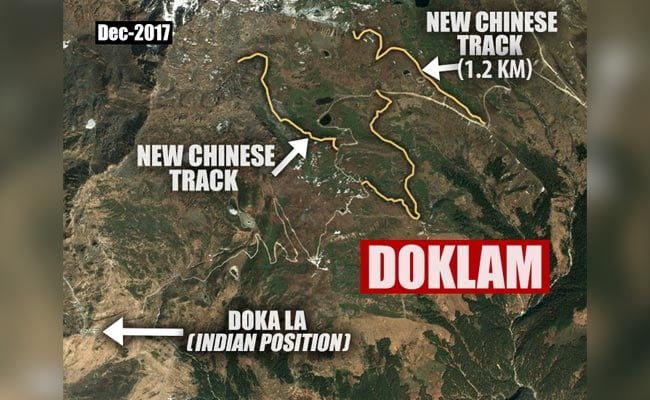A new stretch on the road extends for one km and lies approximately 4.5 km east of the standoff site.
Quick Take
Summary is AI generated, newsroom reviewed.
At least two stretches of road built between October 17 and December 8
India, China had ended one of their worst border stand-offs in decades
China said Doklam stand-off has put ties under "severe stress"
The most prominent new stretch on the road extends one km and is around 4.5 km to the east of the standoff site, which was next to the Indian Army's post at Doka La. A second stretch has been built around 7.3 km to the east of the standoff site and extends northwards for a distance of nearly 1.2 km. There are additional stretches that have been constructed 10 km from the dispute site near the Sinche La pass, as reported by NDTV in October .
A comparison of satellite images over the last 13 months shows that the new stretches of road have been built after February 19; at least two extensions are very recent, between October 17 and December 8.

A second prominent shunt in the road extends northwards for a distance of nearly 1.2 km.
Just yesterday, External Affairs Minister Sushma Swaraj held talks with her Chinese counterpart Wang Yi ahead of a Russia, India and China (RIC) Foreign Ministers' meeting. According to the foreign ministry, the meeting gave "fresh momentum to our bilateral relationship."
But in an unusually blunt statement today, the Chinese foreign ministry said the Doklam standoff has put ties under "severe stress" and efforts to foster mutual trust over the last year were "not very satisfactory".
"The matter was finally settled peacefully through diplomatic means, reflecting the maturing of bilateral relations. However, lessons should be learned and should be avoided again," said minister Wang Yi with the hint of a warning.
There are reports that China has positioned in the Doklam region more than 1,000 soldiers who are likely to remain in the area throughout winter for the first time. The Indian Army is already well-positioned in the region with several units in Sikkim facing the Chinese in Doklam.
Track Latest News Live on NDTV.com and get news updates from India and around the world

